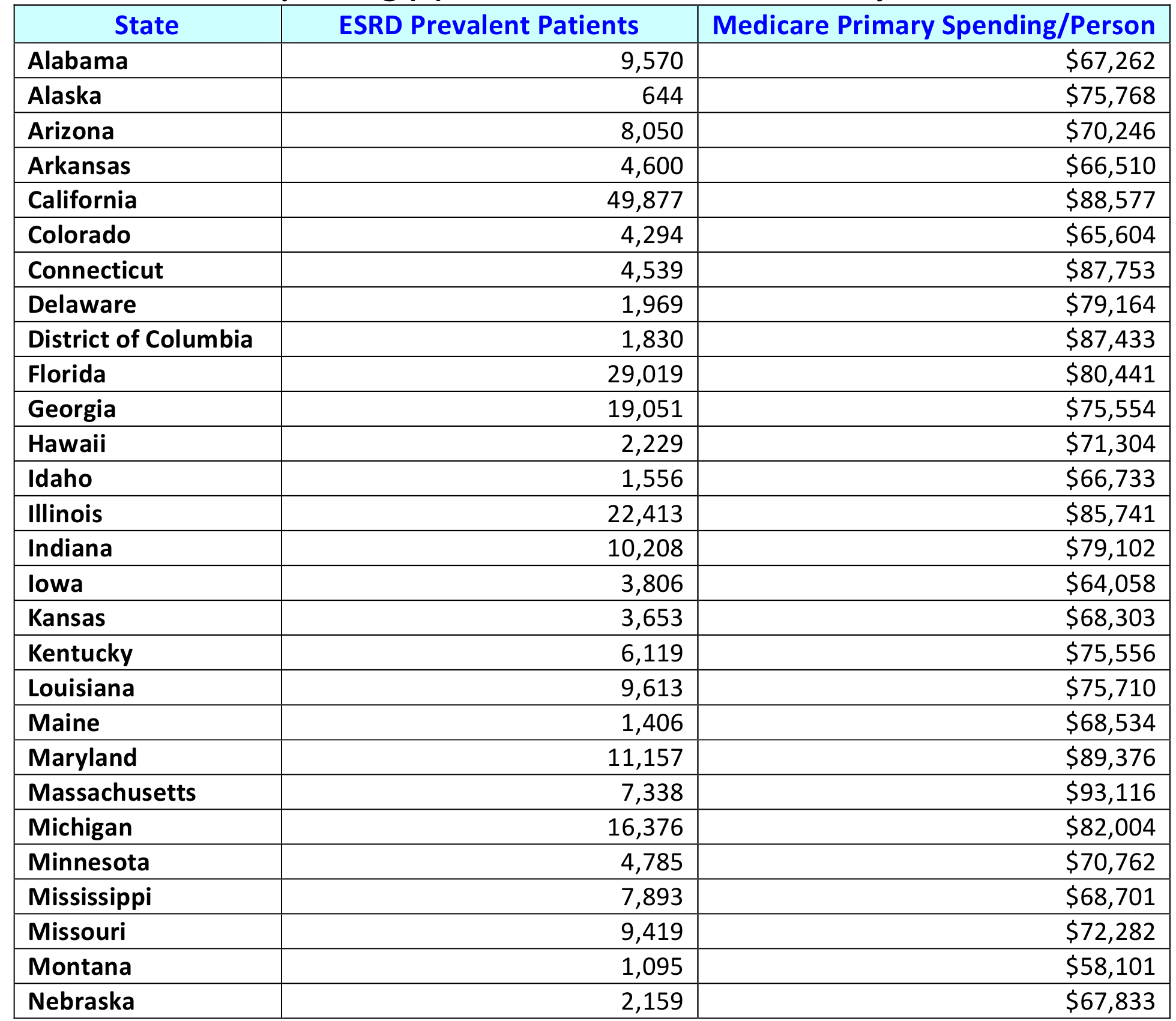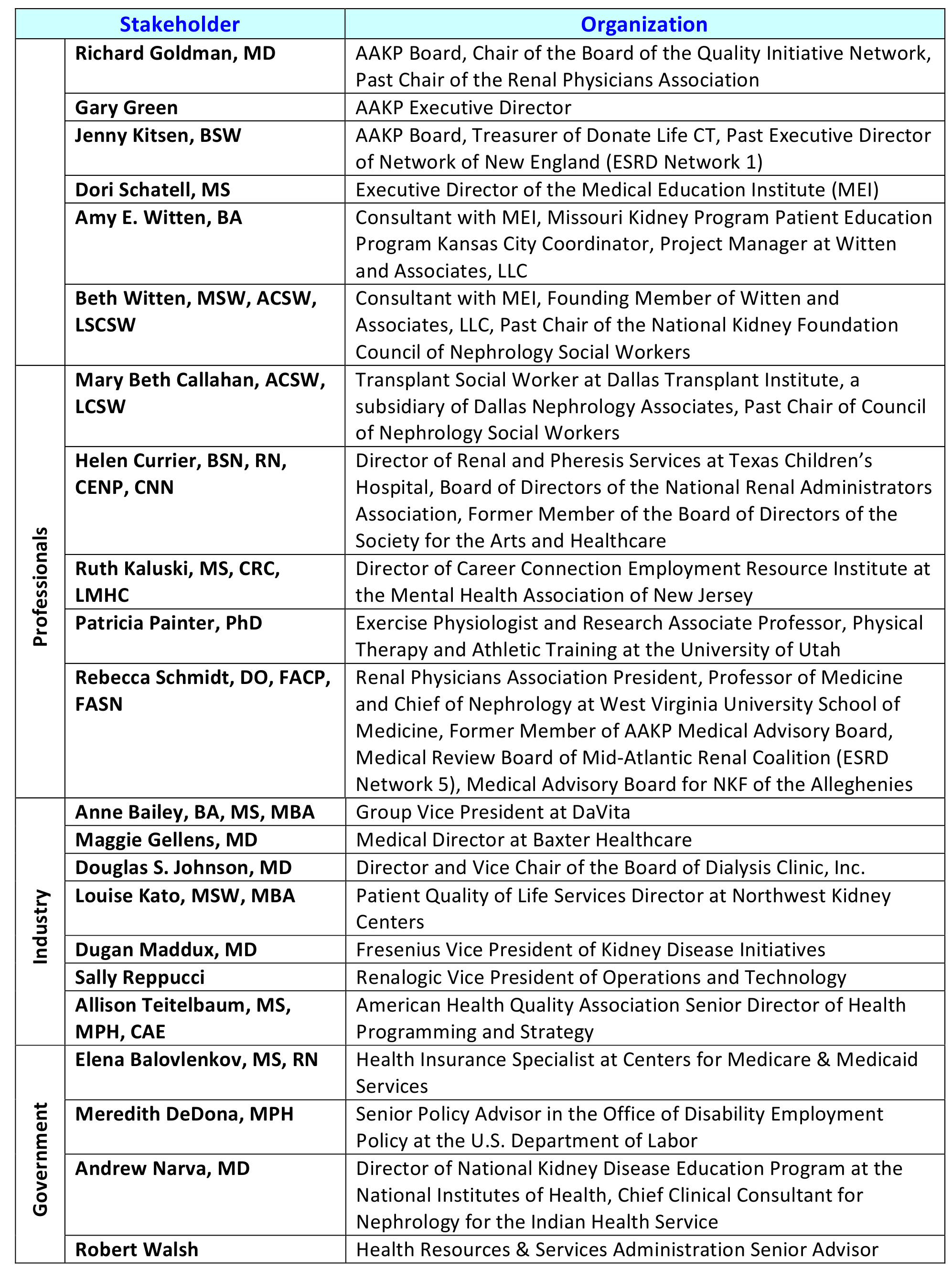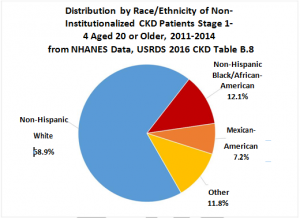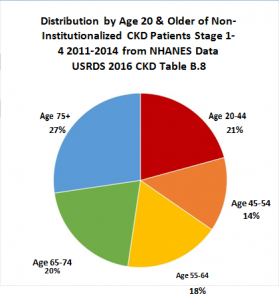For the 53% of people with CKD who are working-age, keeping a job helps ensure access to preventive care they desperately need to delay or avoid kidney failure—and remain active, productive, tax-paying citizens. Working creates routines and boosts self- esteem, income, feelings of purpose, and social interaction. CKD symptoms can pose challenges for keeping a job—but, most of these symptoms can be effectively treated. Children who have kidney disease need to remain in school so they can be productive when they become adults.
Many working-age people with CKD do work—but many lose their jobs. Between 2006 and 2014, 68,341 people with CKD lost their jobs in the 6 months before they developed ESRD. Yet, it seems reasonable to expect that continued employment of people with CKD can:
- Improve people’s health, quality of life, and survival—and prevent disability
- Protect income and health benefits and offer as normal a lifestyle as possible
- Reduce costs to Medicare, Medicaid, and federal and state support programs
- Help employers lower their costs by retaining valued and skilled employees
- Keep private health insurers’ members healthier through preventive care
- Lower expenditures for private disability insurers
For many Americans, employment gives life a sense of purpose. And, while all those with CKD expend time and money to treat their illness, not being able to work due to CKD has costs such as:
- Lower lifetime income and retirement earnings and savings
- Unplanned life decisions and deferrals of major decisions such as home purchases
- Fear, anxiety, and stress on family and loved ones
- Loss of relationships and friendships, and sense of identity
Societal costs of preventable dependency and disability for those with ND-CKD include:
- Lost federal and state tax revenue
- Reduced workforce productivity and GDP
- Greater healthcare expenditures for both patients themselves and taxpayers
- Increased federal spending for disability, Medicare, and Medicaid
Barriers to CKD employment identified by the KidneyWorks stakeholder group:
- Patients may believe that disability is an attractive option
- Healthcare providers may believe that patients cannot or do not want to work
- Patients may not know their workers’ rights and when/how to talk with an employer about CKD
- Patients may fear discrimination and have concerns about coworkers perceiving preferential treatment
- Lack of education among some patients and medical professionals not in the kidney community about how to slow kidney disease
- Children’s schools may not fully support their attendance with a chronic illness
- Patients may receive mixed messages from family and friends about continuing to work
- Patients may feel overwhelmed by life changes and the unpredictability of chronic illness
- Patients may have work-limiting symptoms such as fatigue, weakness, and cognitive dysfunction (“brain fog”)
The two leading causes of chronic kidney disease are type 2 diabetes and high blood pressure. While CKD and kidney failure can be devastating for anyone, the impact on American minority adults, who are at disproportionately higher risk for CKD and kidney failure than whites compared to their prevalence in the population, is even more alarming.
KidneyWorks Recommendations:
In response to these barriers, KidneyWorks expert stakeholders made five core recommendations, as well as specific recommendations to several key audiences:
- Raise awareness of CKD among the general public and those most at risk. Use creative approaches to target employers, organizations, clinicians, patients and families with key messages.
- Identify CKD early and provide optimal medical and psychosocial management. Screen those at higher risk and use a team approach to empower patients and families to self-manage, share decision-making, and make lifestyle changes such as exercise that can help slow disease progression.
- As soon as CKD is diagnosed, provide patients and family members with employment-supportive education. To continue working, patients must learn to self- manage CKD, understand their rights on the job, and obtain job support. Education can help patients plan a treatment for kidney failure, should that occur, that allows them to work, such as transplant or home dialysis. Identify opportunities for education from early CKD to dialysis and transplant, with the assistance of agencies such as the National Institute of Diabetes and Digestive and Kidney Diseases (NIDDK), the Health Resources and Services Administration (HRSA), and the National Kidney Disease Education Program (NKDEP) clearinghouse. Tailor information to their needs and offer it in a variety of formats—early and often.
- Take active steps to slow CKD progression. Help patients learn how to control blood pressure and blood sugar control, to exercise, lose weight, limit dietary protein, quit smoking, and learn symptoms to watch for and report.
- Support kidney transplant recipients in the workforce. After a transplant, encouraging continued work, identifying meaningful work that creates a sense of purpose, encouraging employer flexibility, and offering vocational support are proven interventions to help people stay in the workforce.
For Patients:
- Those with known CKD should ask their primary care physician for a referral to a nephrologist; seek out CKD education, support, and resources; and participate in and follow their treatment plans.
- Those who do not know if they have CKD should ask for copies of laboratory test results, track them over time, and ask about any high or low results.
For Employers:
- Allow flex-time or time off for medical appointments to promote better employee health.
- Retain employees who have CKD to avoid the high costs of hiring and training new employees, many of whom will also have one or more chronic illnesses—as half of all Americans do.
For Medical/Professional Societies:
- Consider developing performance measures to support patient employment throughout CKD.
- Examine models used by other countries that maintain patient employment despite advancing CKD or other chronic illnesses, and determine whether those models can be used or adapted for the U.S.
- Increase nephrology fellows’ awareness of the challenges faced by employed patients—and the many benefits to patients and their families—and society—of continuing to work with ND-CKD.
For Healthcare Providers:
- Offer appointment times that accommodate patients’ work schedules.
- Talk with patients and families about the benefits of working and avoiding disability when possible.
- Remember that patients who can keep their jobs are more likely to retain employer group health plans that will bring in more revenue to a practice or clinic than Medicare or Medicaid.
- Consider the societal benefits of a healthier population with fewer hospitalizations, less anxiety and depression, and a more active lifestyle.
For Policymakers/Congress:
- Recommend that government and private health plans cover early CKD screening of those who are at increased risk of progression according to KDIGO guidelines.
- Encourage insurance companies, providers, and businesses to make it financially feasible to hire and retain employees with chronic illnesses, including ND-CKD.
- Promote training for vocational rehabilitation counselors, social workers, and physicians that includes education about the unique needs of CKD patients who want to keep their jobs.
- Provide tax credits for employers of any size to make accommodations, including telework when feasible, for those with chronic illnesses and disabilities.
- Develop a national education campaign for employers and employees to explain the Americans with Disabilities Act and the Family and Medical Leave Act, and to debunk myths about hiring and retaining employees with a chronic illness.
- Consider amending the Medicare Improvements for Patients and Providers Act (MIPPA) to expand qualified CKD education providers to include clinical social workers and add employment as a topic.
- Expand MIPPA Kidney Disease Education (KDE) Services to include any Medicare patient diagnosed with CKD, not just Stage 4.
- Study the feasibility of expanding the Family Medical and Leave Act to additional employers and encouraging employers to continue to pay workers during a medical leave of absence.
For Other Federal Agencies:
- Centers for Disease Control and Prevention (CDC):
- Expand the Kidney Disease Initiative to include a public outreach campaign coordinating with the Public Health Services.
- Study geographic disparities in the prevalence and incidence of both CKD and ESRD.
- Centers for Medicare & Medicaid Services (CMS):
- Collect data on employment up to 5 years prior to ESRD and include the type of job (e.g., sedentary, active, mixed) on Form CMS-2728 (ESRD Medical Evidence Report).
- Reimburse physicians, non-physician providers, and CKD healthcare teams to discuss goals, employment benefits, and barriers with their patients and work together to overcome them
- Provide sufficient reimbursement to motivate registered dietitians and clinical social workers to become Medicare providers so they can be reimbursed to see ND-CKD patients prior to ESRD.
- Include in the USRDS contract a study of the barriers to utilization of Medicare’s Kidney Disease Education Services.
- National Institutes of Health (NIH): Designate funding to support CKD research projects that include employment as a variable.
- Department of Labor (DOL): Provide evidence-based early intervention services to working people with stable CKD, including transplant recipients.
- Rehabilitation Services Administration (RSA): Study what is needed (services and/or equipment) to help state vocational rehabilitation agencies help people with ND-CKD keep their jobs.
KidneyWorks next steps are to:
- Identify funding support from industry
- Develop outreach materials and messaging
- Collaborate with other chronic disease organizations to boost employment
- Develop a business case for employers
- Include employment as a topic in professional clinical curricula/continuing education
- Create a patient website and toolkit
- Develop pilot projects
Conclusion:
Kidney disease is both costly and devastating, but non-dialysis chronic kidney disease (ND-CKD) does not have to mean permanent disability. Working-age Americans who are diagnosed with CKD can have far greater independence to pursue their aspirations, achieve better health outcomes and contribute more fully to their families and society if they are able to slow the progression of their disease and stay employed. Barriers to their desire and ability to keep working must be identified and removed.
KidneyWorks seeks to reduce disability and dependency and help people with ND-CKD remain active, productive, taxpaying citizens by taking proactive steps to educate patients, families, clinicians, and lawmakers and enact work-friendly practices and policies. ND-CKD patients who continue to work help themselves, their families, their healthcare providers, the healthcare industry in general, insurers, employers, taxpayers—and the U.S. government.
Everyone Benefits When Kidney Patients Keep Working:
| Who Benefits? | What Are Advantages of CKD Patient Employment? | ||
| Patients | ■ | Higher income compared to disability | |
| ■ Better adaptation to kidney disease | |||
| ■ Better access to health insurance (sometimes provided by the employer) | |||
| ■ Better health, better quality of life and lower rates of depression | |||
| ■ | Greater independence | ||
| Family members | ■ | More normal lifestyle, financially and otherwise | |
| Taxpayers | ■ | Extending the life of the Social Security Disability Trust Fund and Medicare | |
| Ø In 2017 dollars, each worker who retains his/her job instead of applying | |||
| for disability saves the trust fund $14,052 a year on average. | |||
| Ø In 2014, Medicare spent $22,745 on average for a ND-CKD patient and | |||
| $78,934 for an ESRD patient. Medicare can save more than $56,000 | |||
| each year for each person who does not progress to ESRD. Cost | |||
| savings to commercial insurers are likely much higher, as they bill at a | |||
| higher rate than Medicare. | |||
| Federal, state and | ■ | Fewer people receiving welfare and/or disability benefits | |
| local government | ■ | Lower Medicare and Medicaid costs | |
| ■ | Increased tax revenues | ||
| Employers | ■ | Savings associated with not needing to recruit and train a new employee | |
| ■ Tax credits and deductions for workplace accommodations | |||
| ■ Compliance with federal and state laws | |||
| Providers | ■ | Higher revenues from commercial insurers than Medicare or Medicaid if | |
| patients begin dialysis | |||
| ■ Improved staff morale when patients are healthier and less depressed | |||
| Health industry | ■ | Increased demand for technology, innovation, products and services that | |
| enhance patients’ ability to work | |||
| Insurers | ■ | Healthier members with preventive care and, thus, lower expenditures | |
The table below shows the data by state of the number of people with kidney failure and the average Medicare costs per patient by state in 2014. Keeping patients working would save federal, state, and local governments money in healthcare costs and provide economic benefits.
Medicare Spending ($) Per ESRD Prevalent Patient by State 2014






